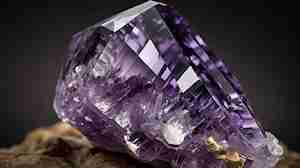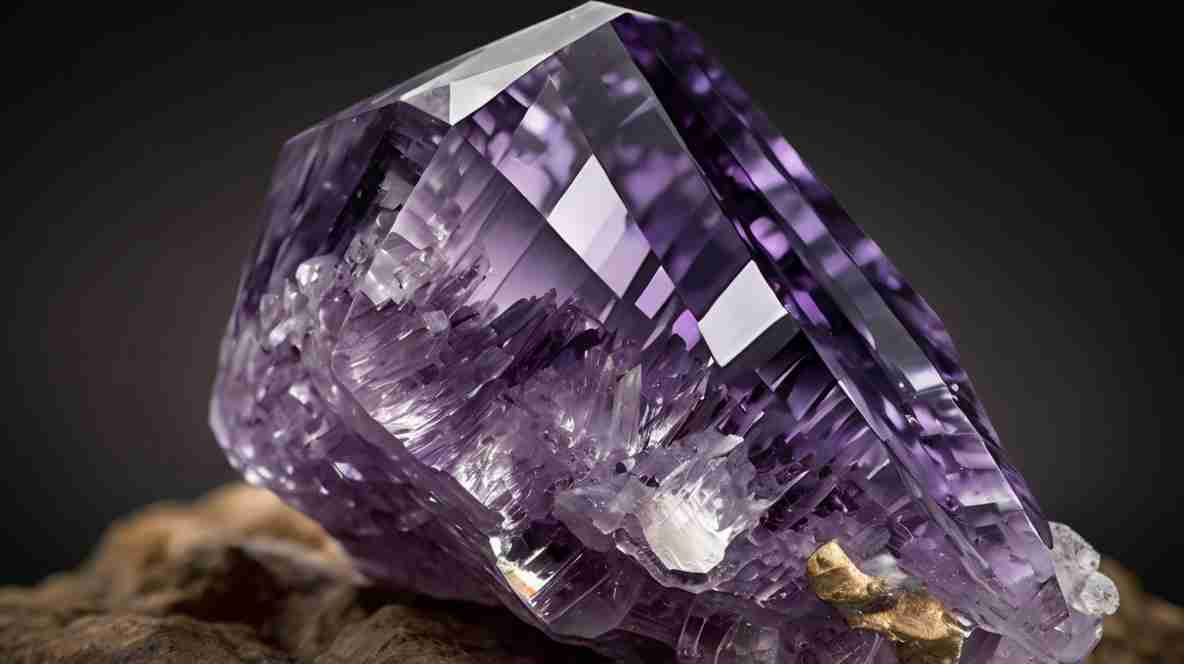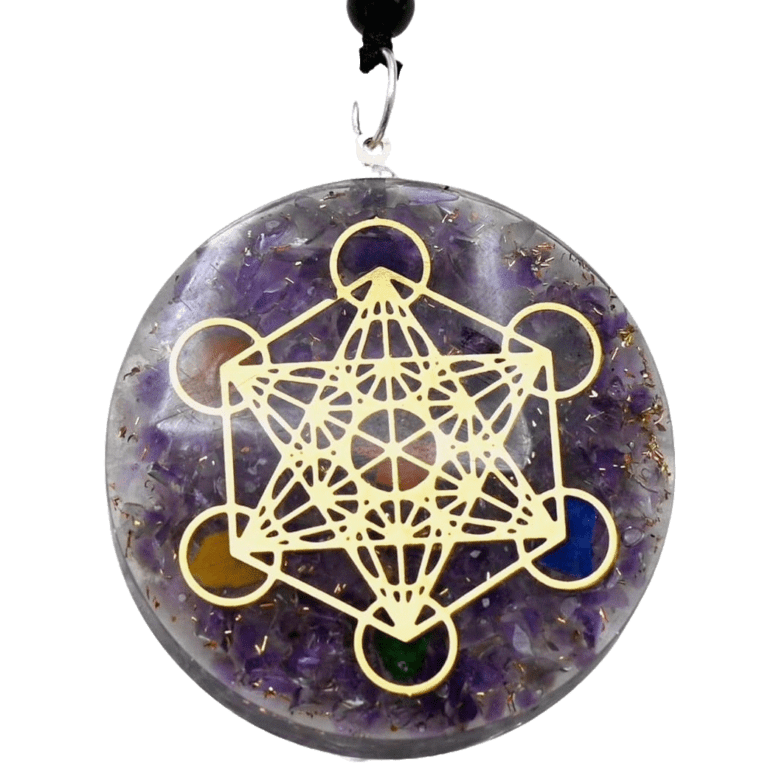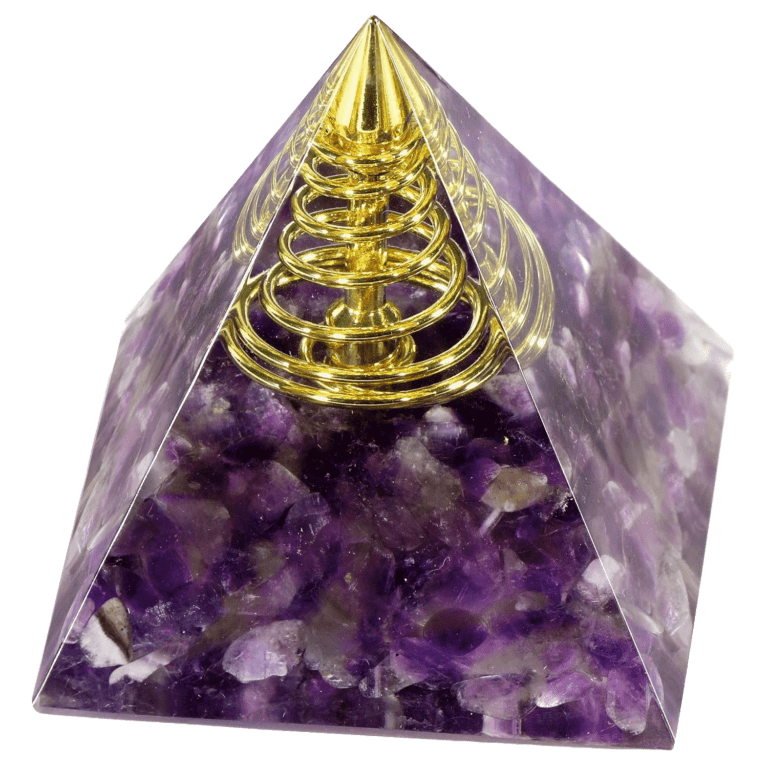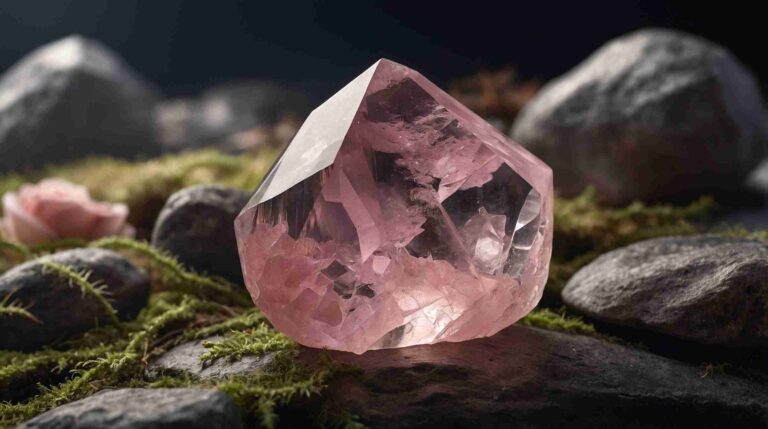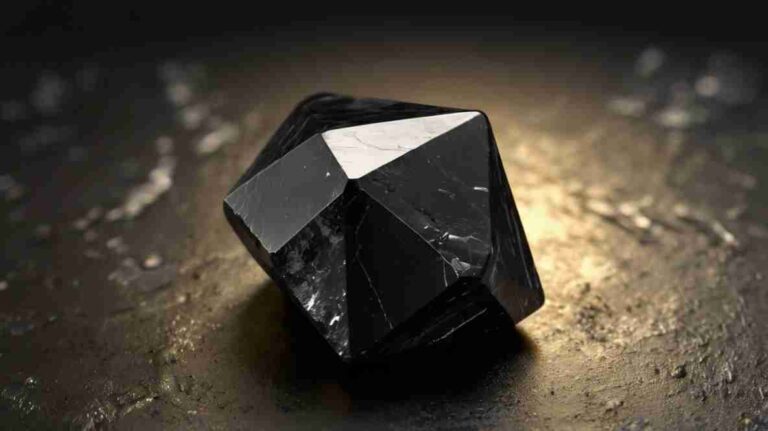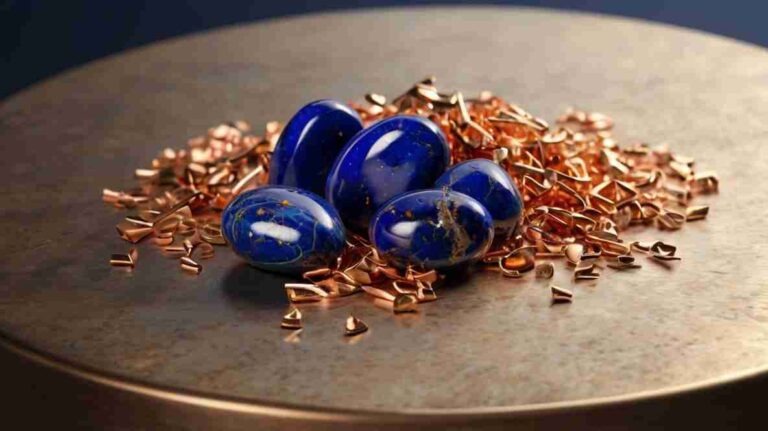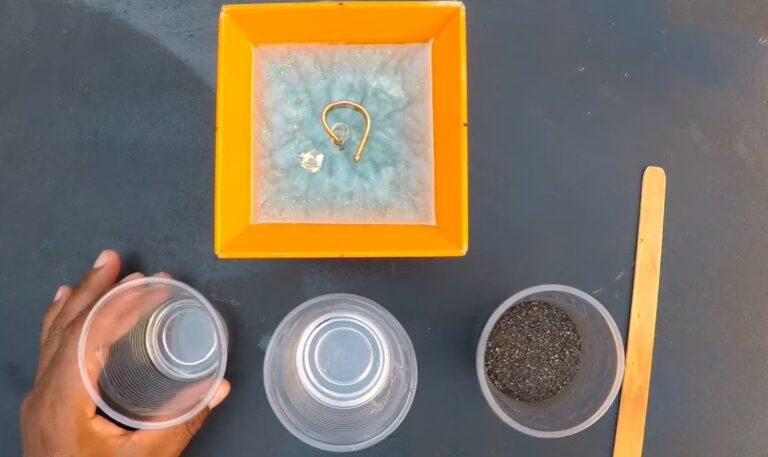There is no doubt that amethyst is one of the most beautiful gems that we can find due to its intense purple color. But what many people don’t know is that amethyst is full of beneficial properties.
In this article you will discover the meaning and properties of this semi-precious stone.
MEANING, HISTORY, AND PHYSICAL PROPERTIES OF AMETHYST
Amethyst is a purple variety of quartz, whose coloration is due to iron impurities in its silicon dioxide matrix. It is a rigid, hard and compact-looking crystal. According on its physical condition, it is technically considered a crystal and not a stone. However, it can be treated in jewelry so it is also considered a gemstone.
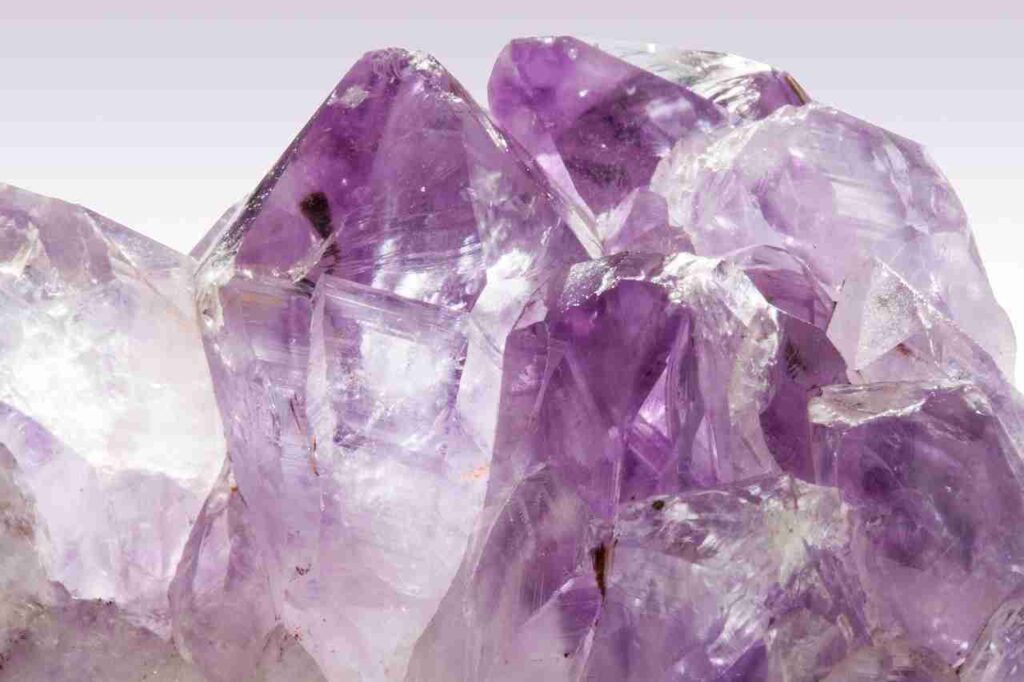
Its main physical properties can be summarized in the following chart:
| Chemical composition | SiO2 |
| Color | Depending on inclusions, purple |
| Luster | Glassy |
| Hardness | 7 in the Mohs scale |
| Crystal system | Trigonal |
| Specific Gravity | 2.65 depending on impurities |
| Refractive Index | nω = 1.543–1.553 / nε = 1.552–1.554 |
| Chemical reactivity | Not attacked by acids or alkalis |
| Solubility | Insoluble |
| Melting Point | 1650±75°C |
Amethyst is a gemstone known since ancient times. The ancient Greeks gave it anti-intoxication properties and built amethyst vessels. In the Middle Ages, European knights wore amulets made of amethyst since they thought it would give them protection in battle.
The Bible, in chapter 21 of the book of Revelation, mentions the 12 stones of heaven, which are: Jasper, Sapphire, Chalcedony, Emerald, Sardonyx, Sardius, Chrysolite, Beryl, Topaz, Chrysoprasus, Jacinth, and Amethyst, indicating that all of them are the gems of the Mountain of God. And more specifically about amethyst, it says that it is the last stone of the foundation of the New Jerusalem (Revelation, XXI, 20).
Later, with the Catholic Church fully established, the curia wore amethysts on the crosses symbolizing piety. There are even records from the Middle Ages, indicating that apparently, in some battles these crosses with amethysts were carried not only as an amulet for battle but as a reminder to be pious towards the defeated.
A GEMSTONE OF DIFFERENT COLORS?
Although there is a belief that there are different colorations for amethyst, in reality it is always quartz with different types of impurities, and therefore, different minerals.
An example is green amethyst, which is a synthetic gem created by adding inclusions of iron and nickel, which technically transforms it into prasiolite, a variety of green quartz created in nature at very high temperatures.
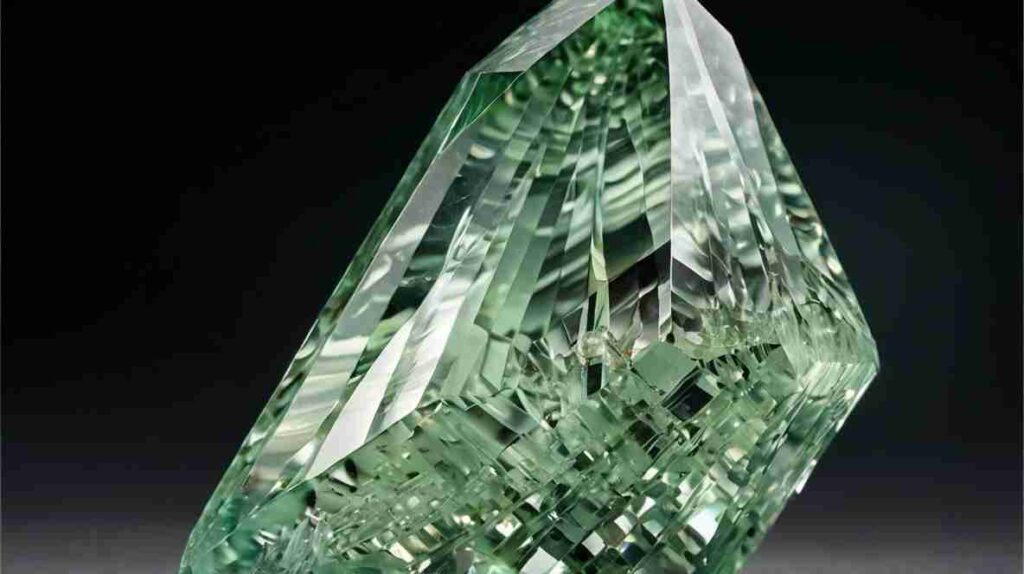
There is a blue amethyst, although it is not blue, is just a variety known as “Deep Siberian” that has 15-20% bluish tones. This is due to the way in which the inclusions, depending on the pressure and temperature at which they have formed, reflect the wavelength of sunlight.
Amethyst can also be yellow or orange in color. This is due to the heat, since when it is subjected to high temperatures it acquires this shade. This phenomenon, observed in the laboratory, can also occur in nature, and, in fact, citrine is an amethyst that has gone through this process.
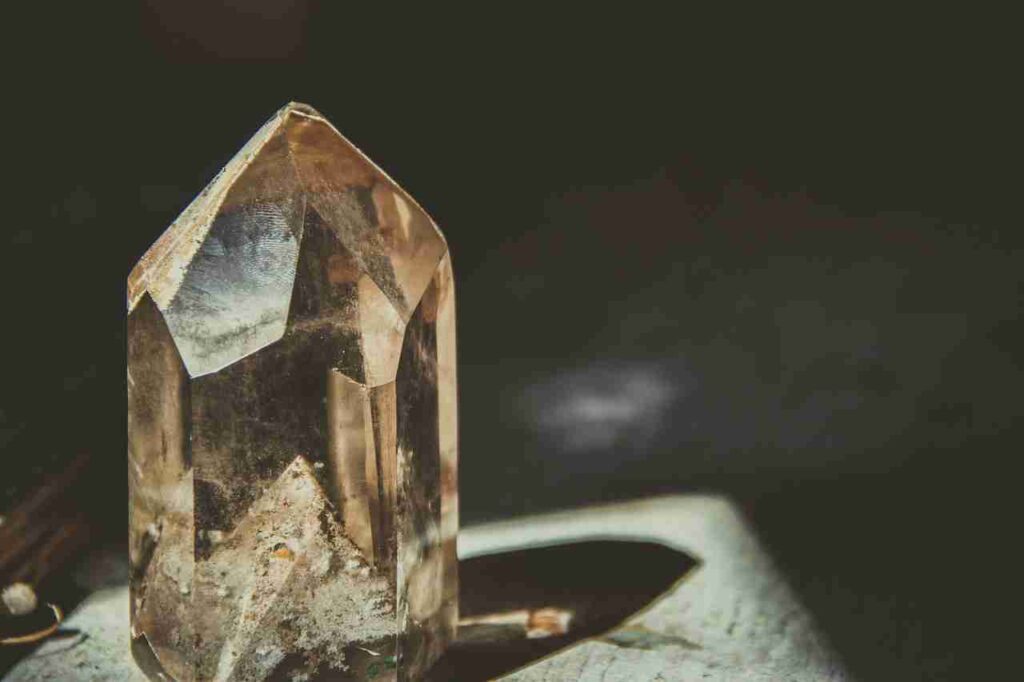
On the other hand, amethyst can have different shades and degrees of violet, from the most intense to much lighter ones, depending on the number of inclusions and its formation conditions. However, it cannot be transparent white since in that case would be quartz
FORMATION
Amethyst, like other varieties of quartz, forms in volcanic rocks. In the mantle, the silicon present in the Earth’s crust and oxygen combine at high temperatures, giving rise to silicon dioxide that remains molten. In this process, other much less abundant chemical elements are added, such as iron, which will later give rise to the violet color. Subsequently, during the natural movements of the mantle due to plate tectonics, some “bubbles” rise towards areas closer to the surface, beginning a cooling process that will lead to the crystallization of silicon dioxide. If the cooling process is slow, larger amethyst crystals will form. On the contrary, if the cooling is accelerated, the effect will be the opposite.
Once cold and solidified, we find it in the form of geodes. Geodes are the mantle “bubbles” that have solidified. Externally they appear to be rocks without any interest, but inside, is where the occlusions of the beautiful amethyst are found.
WHERE AMETHYST IS FOUND?
In many countries, being the top producers Brasil (South America), Zambia (Africa), Uruguay (South America) and Russia (Europe). However, some other countries like Madagascar and Mexico have production, and in the United States, are abundant in Thunder Bay (Lake Superior).

HOW IS AMETHYST USED?
Is little used industrially. Its main uses focus on jewelry and home decor. In jewelry, constant growth is expected until 2030, with earrings and bracelets being the fastest growing products. The second most important market is Home Decor, where growth is expected to be similar or even slightly higher than that of jewelry.
In general, is not an expensive gem because, since deposits in Brazil were discovered in the 19th century, it is not considered rare. However, the price can vary widely depending on many factors, such as color, quality, clarity or cut. In general, average quality amethyst can range $5-10 per carat, nevertheless, the most appreciated stones, the “Deep Siberian”, can reach $50 per carat or even higher. It is important to know that at the beginning of the amethyst market, the term “Deep Siberian” or “Deep Russian” was used because the best colors and grades were found in this country. Later the term has evolved and today it does not refer to the pieces coming from Russia, but to the degree of quality regardless of the country of extraction.
WHICH ARE THE BENEFITS?
Amethyst is known for its calming properties, often associated with tranquility. It is an excellent stress and tension reducer, and can also enhance relaxation. It is ideal for individuals who are nervous or feel anxious in various situations, as well as for those who have highly stressful and demanding jobs. Additionally, it can help improve sleep quality. Amethyst makes an excellent gift for those who suffer from anxiety.
Is a gem with the capacity to generate orgone energy and diffuse it around it. However, this capacity alone is not as effective as if it is used in an orgonite in combination with the rest of the elements that make it up (orgone accumulator metal, resin, etc.). Thus, amethyst does not work by absorbing orgone energy but acts as an emitter.
Amethyst can also help unblock the Third Eye chakra used in chakra cleansing therapies. For this task it is especially effective if these therapies are combined with the use of orgonites. Because of that reason amethyst is considered a Power Stone.
Amethyst crystals should not be activated, recharged, or cleansed of bad vibrations if they are part of an orgonite. In these cases, the orgone accumulator, usually copper, will be in charge of keeping the amethyst completely clean, activated and constantly aligned.
WEARING AMETHYST
Amethyst is perfect to be worn in the form of a pendant, amulet, bracelet, or necklace. There is no limitation on how long it can be worn or by whom. It is recommended to use it as an integral element of an orgonite, since, in addition to its properties, its ability to generate orgone energy can be useful as part of relaxation therapy or meditation.
If used in the form of orgonite, it can be carried in the form of an orgonite pendant, or if, on the contrary, an orgone pyramid is preferred, it can be left on the nightstand to promote a night’s rest.
After using it for some time, you should gradually begin to notice improvements in your stress level, calmness, and a decrease in anxiety.
Amethyst has no side effects when used correctly in orgonite form or as a solo crystal, however it should not be ingested or used in any way other than carrying it or having it nearby. In small children, an amethyst earring or ring can represent a choking problem in case of accidental ingestion.
TAKING CARE OF YOUR AMETHYST
The best way to clean an amethyst is with a cloth moistened with water. You really don’t need anything else. Although quartz is resistant to acids (except for hydrofluoric acid), it is not necessary to use any cleaner based on phosphoric or hydrochloric acid when using a less aggressive and economical way the result will be perfect. The same thing happens with steam cleaning, although occasional cleanings with this system do not represent a problem, there is no need to compromise the color of your amethyst by doing periodic cleanings at high temperatures. The same happens with UV radiation. Long-term exposure to direct sunlight can cause discoloration and changes in the tone of your piece. Although occasional exposure is not a problem, avoid having your pieces continually exposed to direct sunlight.
INTERESTING FACTS ABOUT AMETHYST
Did you know that there is a legend about a curse that affected an amethyst stone? According to this legend, an English writer, Edward Heron-Allen, bought an amethyst in 1890 that had been looted from a Hindu temple. The amethyst had been cursed by Shiva, the Hindu God of death and brought misfortune to anyone who possessed it. Heron-Allen began to have problems shortly after acquiring it, and after a while, when it became clear to him that the stone brought him bad luck, he tried to get rid of the amethyst by giving it to friends, who suffered their own misfortunes and ended up returning the stone to him. Finally, he ended up throwing it into the Regent Canal, only to watch in horror as a few months later it was returned to him by a merchant. Since he saw that couldn’t get rid of it, ended up keeping it in a safe at the bank.
